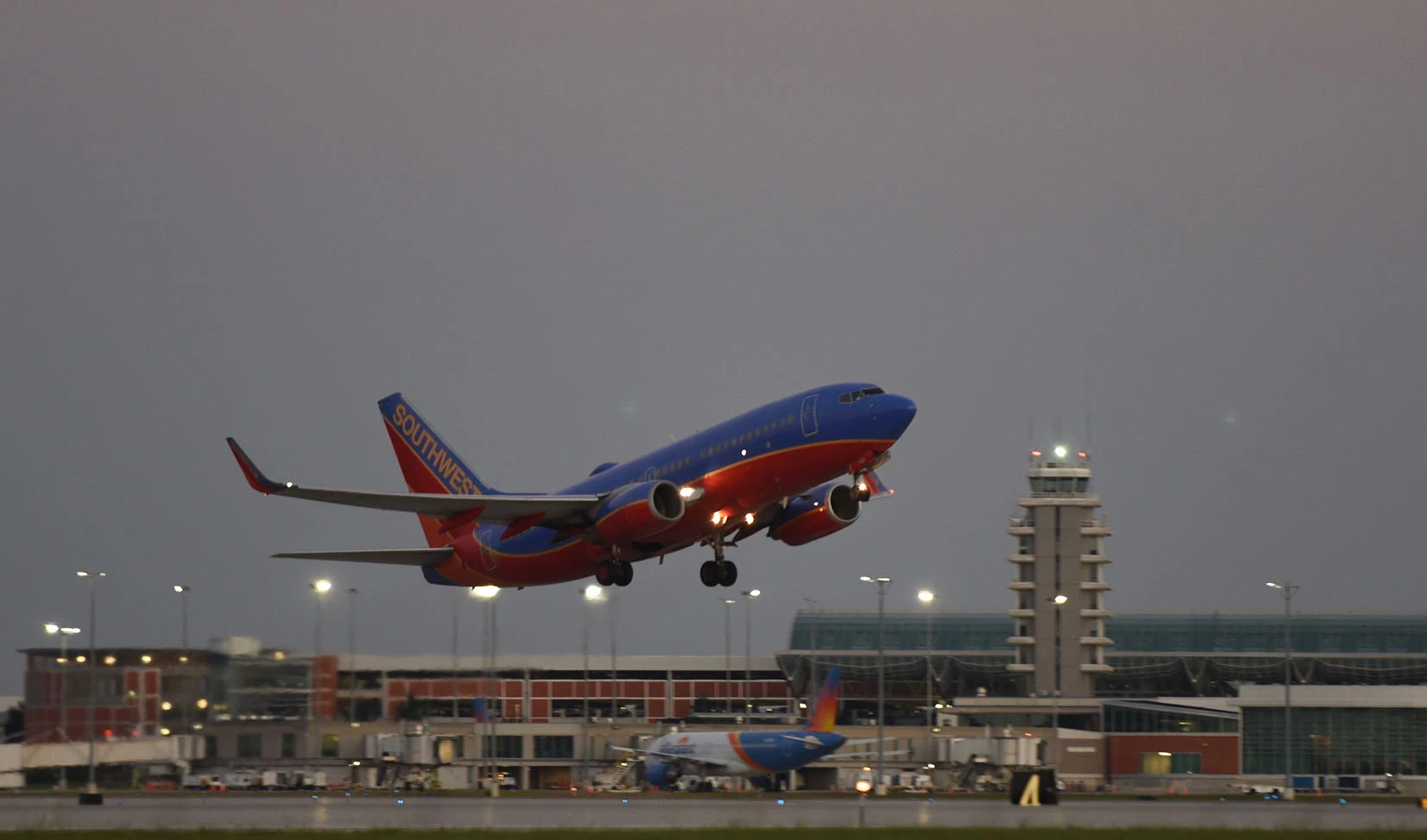
Partner Article
Aurrigo embarks on US aviation first with Gerald R. Ford International Airport project
A UK transport technology specialist is about to embark on an aviation first in the US that could provide the blueprint for the airports of the future.
Aurrigo, which is leading the world in first and last mile autonomous passenger transport and aviation baggage and cargo solutions, will use its Auto-Sim software platform to create a ‘digital twin’ of airside operations at Gerald R. Ford International Airport in Michigan.
The Ford Launchpad for Innovative Technologies and Entrepreneurship (FLITE) provides pilot-testing opportunities to companies focused on bringing emerging air travel solutions to market.
Through this initiative, Aurrigo will identify cost savings, enhance customer experience, achieve a host of environmental improvements and, importantly, lay the foundations for how the airport could implement autonomous operations in the future.
Utilising a PlanetM Testing Grant from the Michigan Economic Development Corporation, Aurrigo will build a model of airside operations, covering roadways, intersections, stands and all operational vehicle types and movements.
A team of expert simulation engineers and project management specialists, based in its advanced engineering centre in the UK, will work with Ford International Airport planning staff to integrate vehicle fleet capacity and flight schedules so they can simulate airside servicing to benchmark current operations and predict future scenarios.
As well as modelling operations, the Auto-Sim software platform can also simulate the effects of staff shortages due to Covid-19, flights delays, the de-icing schedule for departing aircraft and severe weather events including heavy snow and ice.
David Keene, CEO of Aurrigo, said: “The world’s airports are all facing the same challenge of providing greater levels of customer service with the most cost-effective use of resources and minimal environmental impact. It’s a careful balancing act and one brought into even sharper focus with the impact of the Covid-19 pandemic.
“Auto-Sim will enable Ford International Airport to be the first in the US to complete a real-world feasibility study of a current airport using digital twin technology.”
He continued: “This allows airport planners to model the operational processes, financial implications, customer journey experience and environmental impact of implementing new technology without the risk of expensive mistakes.
“We hope it will encourage other airports within the US and around the world to utilise the Auto-Sim platform to streamline operations and reduce their environmental impact, whilst also providing the optimal customer experience and preparing them for future operations that involve airside automated vehicles.”
Aurrigo will work with Ford International Airport and consortium partners Southwest Airlines, Stantec, Seamless and the Michigan Office of Future Mobility & Electrification to complete this project by the end of May 2022.
Auto-Sim has the capability to replicate the airport’s busiest periods, which at any given day, could include 112 aircraft movements, requiring upwards of 1000 individual activities to be serviced.
Before the pandemic, Michigan’s second busiest airport catered for nearly 3.6 million annual passengers and, in 2019, handled 41.4million kg of air freight – all considerations that will be factored into the modelling work.
The technology can also generate detailed energy consumption data for every vehicle modelled in the airside operations, including optimising current operations and exploring ways to minimise distance travelled to service the flight schedule.
“FLITE enables us to partner with entrepreneurs and established companies focused on developing innovative new products and services to improve Airport operations and air travel experience for guests,” said Tory Richardson, president and CEO of the Gerald R. Ford International Airport Authority.
“We are proud to welcome Aurrigo to our Airport to offer them the opportunity to test their Auto-Sim software platform alongside our airside operations.”
Aurrigo has been creating headlines in the aviation sector after using its Auto-Sim technology to help Changi Airport in Singapore with development work on a new terminal.
The company, which was founded by brothers David and Graham Keene nearly 30 years ago, has also used its in-house software, technology and engineering expertise to develop the Auto-Dolly, a new autonomous luggage and cargo system that has the potential to deliver 60% carbon savings for airports.
It is anticipated that the digital twin modelling work could prove the business case for these dollies to replace conventional diesel-powered luggage and cargo tractors and trailers by two thirds.
David concluded: “COP26 highlighted how important sustainability will be in the future global economy and airports have a massive role to play in minimising their environmental impact.”
For further information, please visit www.aurrigo.com or follow @aurrigotech on twitter for updates
This was posted in Bdaily's Members' News section by Russ Cockburn .








 How to make your growth strategy deliver in 2026
How to make your growth strategy deliver in 2026
 Powering a new wave of regional screen indies
Powering a new wave of regional screen indies
 A new year and a new outlook for property scene
A new year and a new outlook for property scene
 Zero per cent - but maximum brand exposure
Zero per cent - but maximum brand exposure
 We don’t talk about money stress enough
We don’t talk about money stress enough
 A year of resilience, growth and collaboration
A year of resilience, growth and collaboration
 Apprenticeships: Lower standards risk safety
Apprenticeships: Lower standards risk safety
 Keeping it reel: Creating video in an authenticity era
Keeping it reel: Creating video in an authenticity era
 Budget: Creating a more vibrant market economy
Budget: Creating a more vibrant market economy
 Celebrating excellence and community support
Celebrating excellence and community support
 The value of nurturing homegrown innovation
The value of nurturing homegrown innovation
 A dynamic, fair and innovative economy
A dynamic, fair and innovative economy